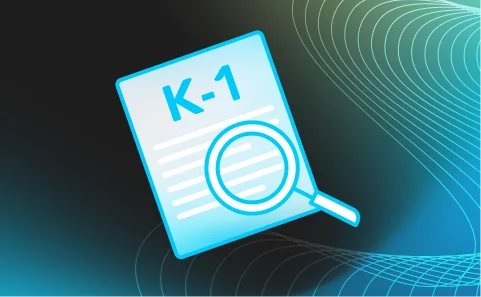Blog
Reviewing K-1s Before Delivery: A Tax Team QA Framework

BY Scott Turner
May 28
Reviewing K-1s Before Delivery: A Tax Team QA Framework
Why a QA Process for K-1s Matters
Limited Partners (LPs) expect precision and clarity in their Schedule K-1s. Errors can lead to amended returns, compliance risks, and reputational damage during tax season. According to a Journal of Accountancy report, 67% of the claims in the AICPA Professional Liability Insurance Program were related to tax planning and compliance services, with almost all involving a failure in quality control.
When to Begin the K-1 QA Process
- Before the final capital account close: Ensure all contributions, distributions, and reclassifications are accurately recorded.
- Once draft K-1s are generated and allocations are applied: Review for consistency with financial statements.
- Before uploading to LP portals or third-party delivery systems: Confirm formatting and completeness.
The Core K-1 Review Checklist
- Verify capital account totals and year-end balances: Ensure alignment with financial statements.
- Confirm ownership percentages and profit/loss allocations: Check for accuracy across all entities.
- Check that preferred returns and waterfalls are applied correctly: Validate calculations against fund agreements.
- Ensure all mid-year entries and exits are reflected accurately: Account for any changes in partnership interests.
- Review Part II (Partner Info) for formatting, spelling, EINs, etc.: Correct any discrepancies in partner information.
- Validate all federal and state withholding amounts: Confirm compliance with applicable tax laws.K1x
Advanced QA for Complex Funds
- Tiered ownership or multiple entities: Ensure allocations are correctly distributed across all levels.
- Hybrid structures (real estate + operating companies): Address unique tax considerations for each component.
- Non-resident or international investors with exemptions: Verify proper application of tax treaties and exemptions.
Common Issues Found During K-1 Reviews
- Mismatched allocations vs. capital accounts: Can lead to incorrect income reporting for LPs.
- Income misclassification (ordinary vs. capital gains): Affects tax liabilities and investor reporting.
- Incorrect partner addresses or tax IDs: May result in delivery issues and compliance problems.
- K-1s generated before fund accounting is finalized: Increases the risk of errors and subsequent amendments.
Organizing a Review Workflow Across Tax and Fund Ops
- Assign review roles across tax, accounting, and operations: Clearly define responsibilities to ensure thorough reviews.
- Set up a standardized review document or QA template: Facilitates consistency and completeness.
- Use version control and lock drafts once approved: Prevents unauthorized changes post-approval.I
Leveraging Automation in the QA Process
- Automated flags for rounding errors, missing data, and allocation mismatches: Enhances accuracy and efficiency.
- Real-time preview of investor-ready K-1s: Allows for immediate identification of issues.
- Bulk review exports for fund-level analysis: Simplifies the review process for large funds.
Final Steps Before Delivery to LPs
- Format check: PDF structure, digital signature, delivery naming: Ensure professional presentation and authenticity.
- Ensure investor portal permissions are in place: Confirm that LPs can access their K-1s without issues.
- Notify IR or client service teams in advance of release: Prepare for any investor inquiries or support needs.
Final Thoughts: QA as a Tax Ops Differentiator
Consistent, error-free K-1s improve investor trust and demonstrate a mature, audit-ready tax operation. A disciplined review process saves time and reduces the likelihood of amended filings, positioning your fund as a reliable and professional entity in the eyes of investors and regulators.